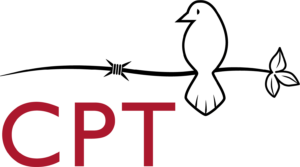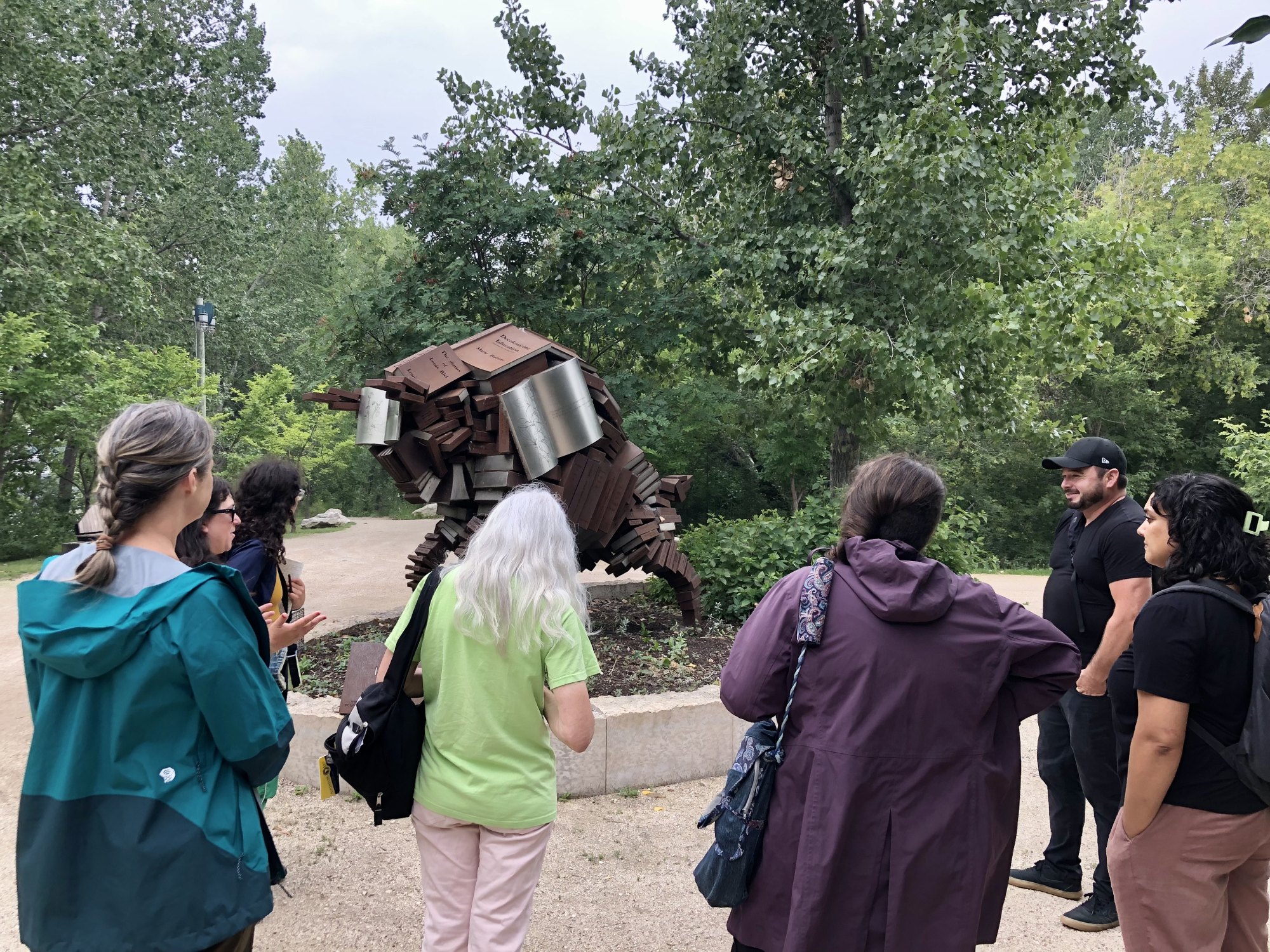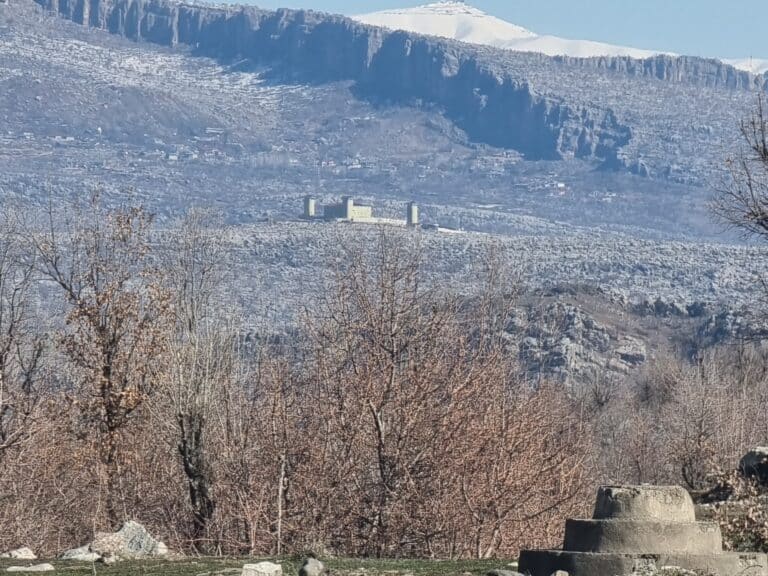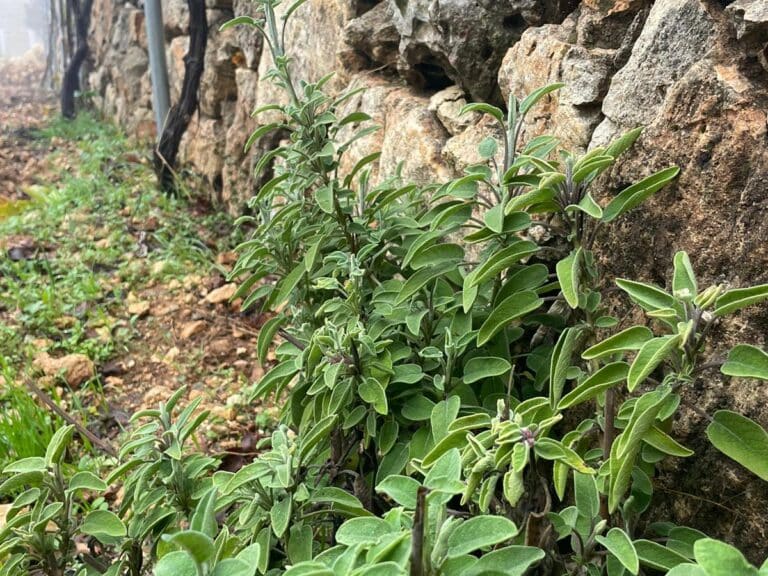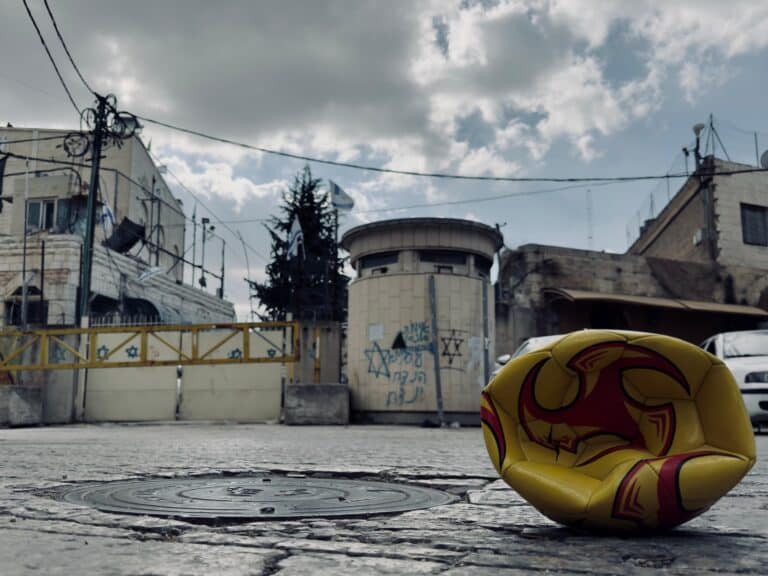Located in Winnipeg, Manitoba, sits the Museum of Human Rights. The name makes it sound like Canada is progressive for having such an institution. For some, the purpose of such a museum might be to showcase the struggle for human rights and potentially educate people on them. Important questions remain as to whether this museum does that, or if it serves instead as a feel-good experience that allows us to be comfortable, situating human rights violations as something in the past that we have remedied. While the museum attempts to put such violations in the past, one doesn’t have to go far to see how Canada still violates human rights, and to recognize that the settler colonial project is ongoing.
The very location of the museum is a site of ongoing colonization. The museum is located where the Red River and the Assiniboine River meet – aptly called The Forks today – a meeting place for Indigenous peoples for thousands of years. This was a place where the Métis Nation gathered, planted crops, exchanged goods, participated in ceremony and became strong. It is a site where they resisted colonial powers and where the settler Red River Expedition forces attacked and terrorized the Métis, pushing them out. The museum does not talk about the long history of the Forks, nor does it mention that thousands of artifacts were unearthed when the museum was being constructed. Many people wanted the museum construction to be paused to allow time to excavate the artifacts. Instead, construction was pushed forward in haste, further burying centuries of rich history beneath the museum’s structure. This is not good for a place that claims to showcase human rights.
The museum is funded by many people and organizations that have benefited and continue to benefit from human rights abuses. While on a walking tour led by Sean Oliver, we learned about the history of the Métis Nation. At one spot, Oliver pointed to the skyline and asked us to identify the names on the skyscrapers. There we saw TD Bank, BMO, and Richardson, to name a few. All of these corporations benefited from land theft and the brutalization of Métis and First Nations People. Many of those corporations have funded the museum, while Indigenous people continue to face a colonial system. While the museum is funded through corporations’ intergenerational wealth, the people on whose land the museum stands struggle against intergenerational trauma, discrimination and financial insecurity. Funding the museum allows corporations to hide the ways in which they undermine human rights; such philanthropy is part of the colonial process.
It is not just the location of the museum, but the contents inside that enable an erasure of the violence that Canada imposes. First of all, within the museum there was very little mention of how Canada has violated human rights, except for cases already acknowledged by the government. These issues were portrayed as though they have now been dealt with. Yet the government continues to fight Indigenous claims in court (and spends a good chunk of money doing so), and continues to push policies (such as Ontario’s Bill 5 and Canada’s Bill C-5) that make Indigenous lands “economic priority zones”, exempt from the government’s duty to consult and get consent from Indigenous communities for resource extraction and development. Through the careful editing of Canada’s colonial legacy and present, the Human Rights Museum is part of the colonization process, allowing the continued genocide and land theft to go unnoticed and unacknowledged.
The architecture is also a challenge. The design of the space encourages solitude and reflection, but for our delegation it made people feel alone. The design also separated issues from each other as if violations and victories happened in isolation. However, they are deeply connected as oppressions are interlinked and communities resist together. For example, the many Indigenous people that are unhoused in Winnipeg, and the polluted water in Grassy Narrows are both a result of colonialism. Linking these struggles together makes our efforts to dismantle oppression more powerful.
Through community building and interconnectedness, we build resistance against colonial violence. In the North End of Winnipeg several Indigenous groups lead community walks to assist neighbours and increase safety. The walks themselves create community as participants get to know each other, and can listen and check in on members of the community. This is a very different message than the one the museum is telling us. Instead of walking alone, divided, we need to walk together to ensure we remain accountable, to stay safe, and to look after one another.
If we want to be peacemakers we need to learn to show up in community. And to do that, settlers such as myself need to get out of our comfort zones, and confront the fact that we are part of the colonial, racist system. Through the delegation I learned that the genocide of Indigenous people continues in ways such as dangerous racism in cities, continued mercury poisoning, the lack of intergenerational wealth in Indigenous communities, the underfunding and underservicing of the North End of Winnipeg, police violence, extraction of resources on Indigenous land, and the lack of aid for people evacuated from forest fires and brought to city centres. It is not enough to talk about these issues at the dinner table. We need to show up and unify together to take action to dismantle these oppressive structures.
